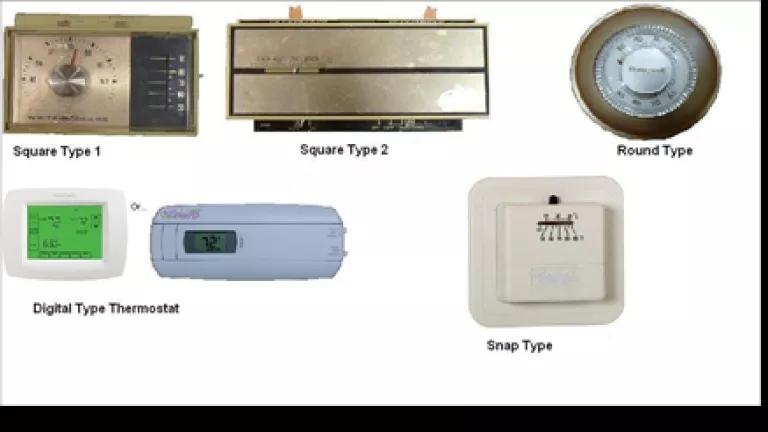
Mercury is a powerful neurotoxin, adversely affecting childhood development even in small concentrations. Based upon blood testing data, federal scientists have estimated that tens of thousands of infants are born in the United States each year with mercury levels that are associated with the loss of IQ. Mercury pollution comes from a variety of sources, including discarded products containing mercury. A new study demonstrates the manufacturer-sponsored program in Illinois to prevent pollution from mercury thermostats is not working well, and will require state action this year to fix.
This new study, commissioned by the Natural Resources Defense Council (NRDC) and the Clean Water Fund, finds that of the approximately 7.7 million thermostats currently in use in Illinois, 1.86 million contain mercury. The mercury thermostats are largely non-digital round and square types installed decades ago; the more recently installed digital models do not contain mercury. Since the average thermostat contains about four grams of mercury, these 1.86 million Illinois thermostats collectively contain over eight tons of mercury.
This mercury becomes a serious problem when the old thermostats are replaced and then discarded. If the glass ampoule containing the mercury is broken or crushed during waste handling or disposal, the mercury will be released into the environment, since mercury is volatile at room temperature. At least some of this mercury ultimately finds its way into our waterways, builds up in fish each time a larger fish eats a mercury-tainted prey, and contributes to the widespread fish consumption advisories in Illinois and throughout the country issued to protect children from the chemical’s harmful effects to their development. For this reason, improving mercury thermostat collection is part of the Great Lakes protection strategy.
More than a decade ago, thermostat manufacturers created a non-profit corporation called the Thermostat Recycling Corporation, or TRC, and started a voluntary program to collect mercury thermostats in Illinois. However, the program in Illinois and elsewhere has been mediocre at best, as recently documented by the United States Geological Survey.
In 2010, the state legislature enacted the Illinois Mercury Thermostat Collection Act, which transformed the voluntary program into a mandatory program, and began the process of setting quantified performance goals for the industry take back program in Illinois. The law established relatively modest collection goals of 15,000 thermostats annually for 2012-2014, and then requires the Illinois EPA (IEPA) to set collection goals for calendar years 2015-2020 in a rulemaking to be completed by November of this year. If the collection goals are not met, IEPA may require the thermostat manufacturers to make the program changes needed to reach the goals, including offering financial incentives to promote HVAC contractor participation. The law sunsets on January 1, 2021.
According to the new NRDC-commissioned study, an average of 102,000 mercury thermostats will come off the walls in Illinois each year from 2014 to 2019, and 84,000 thermostats will be removed in 2020. With TRC collecting only 13,061 mercury thermostats in 2012 (the last year for which data are available), the program goals and performance progress will need major increases to capture even a majority of the mercury thermostats becoming available for recycling. Indeed, this is precisely what happened in California, where a similar study was used by the state to set new collection goals which require TRC to collect hundreds of thousands more thermostats than before.
In this year’s rulemaking that will set the future Illinois collection goals, IEPA has an opportunity to finally establish a successful program to protect the public from potential harm. The law requires IEPA to consider studies which estimate the number of number of mercury thermostats available for collection in Illinois and elsewhere. NRDC’s Illinois study was performed by the same consultant TRC hired to perform analogous estimates for California, and used a very similar methodology. The consultant relied on surveys of Illinois residences and businesses, and then performed statistical analyses, to derive valid estimates as the basis for setting the Illinois 2015-2020 collection goals.
The study also shows that only 37% of the remaining mercury thermostats in Illinois will come off the walls before the law expires at the end of 2020. This means the law must be extended and/or IEPA must consider mechanisms to speed up mercury thermostat replacement while the law remains in effect. Since IEPA cannot presume the sunset date will be extended during the pending rulemaking, particularly if TRC does not actively support such an extension, IEPA must strive to achieve as high a collection rate as possible over the next six years. So, the state’s environmental agency should apply the NRDC-commissioned study and seize the opportunity to set aggressive mercury thermostat collection goals when it writes new rules this year.

